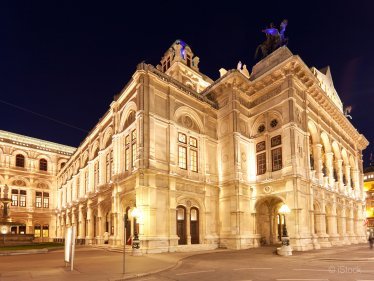Parsifal - Schedule, Program & Tickets
Parsifal
Text Richard Wagner
Stage consecration festival play in three acts
Cast
Musical direction
Alexander Soddy
Staging, stage & costumes
Kirill Serebrennikov
Light
Franck Evin
Co-director
Evgeny Kulagin
Cooperation stage
Olga Pavliuk
Collaboration costume
Tatiana Dolmatovskaya
Video & Photo Designer
Aleksei Fokin Yurii Karih
Battlemaster
Ran Arthur Braun
Dramaturgy
Sergio Morabito
Amfortas
Michael Nagy
Gurnemanz
Günther Groissböck
Titurel
Wolfgang Bankl
Parsifal
Daniel Frank
Klingsor
Werner Van Mechelen
Kundry
Elīna Garanča
The Parsifal of that time
Nikolay Sidorenko
Contents
The men's association of the Knights of the Grail has gotten into a crisis. Because knights desert again and again to the opposite kingdom of the magician Klingsor, who had previously been rejected by the circle of knights. With the help of seductive women, above all Kundry, he manages to bring down the knights. He can even tempt Amfortas, King of the Grail, to make a mistake. He steals his holy spear from him and inflicts an incurable wound on him. As a result, Amfortas has turned his ritual duty of unveiling the Grail into an ordeal. Only a pure fool is destined to undo the fall of the Grail King and its devastating consequences.
ACTION
The action takes place in the time of the Christian reconquista on the partially Arab-occupied Spanish peninsula. The men's union of the Knights of the Grail, which is active there, has got into a crisis. Because knights desert again and again to the counter-realm of the magician Klingsor, who had emasculated himself in his quest for sexual asceticism and had previously been rejected by the circle of knights. His castration gave Klingsor the power to dominate women. He now uses this to bring down the chaste Christian knights. He was even able to mislead Amfortas, the King of the Grail, in which he stole his holy spear and inflicted an incurable wound. As a result, Amfortas' ritual duty of unveiling the Grail has become a torture, which he only carries out under the pressure of his father "living in the grave" and refuses to do so after his death. Only a "pure fool" is destined to undo the fall of the Grail King and its devastating consequences. A crucial role in this work of redemption is played by an enigmatic woman who travels under different identities both in the area of the Grail Castle and in Klingsor's magic castle.
BACKGROUND INFORMATION
Wagner's last opera marvelously combines the problems that confront us throughout the poet-composer's oeuvre: avant-garde and romanticism, the dissolution of boundaries and ideology are almost inextricably intertwined. The genre designation "Bühnenweihfestspiel" refers to the claim of an art religion. The performance was reserved for the Bayreuth Festival until the 30-year copyright expired: theater is staged as a ritual. Racist worldviews thrived in the atmosphere of the Festspielhaus, recommending the purity ideology of »Parsifal« for anti-Semitic and »national« uses.
However, it is not the politically compromised romantic messages of salvation that compel one to confront Parsifal, but rather the new aesthetic territory that the brilliant musical dramatist has explored: »The romantic magic is over. What is left after the spell failed? The style, the technique, the spirit. Not the spirit of 'pure folly', but the spirit of art,« wrote the music writer August Halm in 1916. Of course, his voice, one of the few level-headed ones, could not prevent the National Socialist abuse that was carried out with the work. But she indirectly referred to the pioneers of an emphatic modernism, who took up the legitimate, i.e. creative legacy of Parsifal music: the Frenchman Debussy, whose sound world seems to have been anticipated in the flower girl scene of the second act, and the Austrian Jews Mahler and Schönberg. The solemnly striding metamorphosis music of Acts 1 and 3, together with their bell motifs, had a decisive influence on Mahler's work, while the prelude to Act 3, in which Wagner touches on atonality, anticipates Schönberg's style.
The not only temporal caesura between the first two and the third act has led the director Kirill Serebrennikov, who is also his own stage and costume designer, to let the story of the mature Parsifal be told in a flashback, so to speak, which takes us through the events of the first two acts, until we arrive in the third act in the presence of the narrator. Serebrennikov associates the dysfunctional male world of the Grail Society with the topography of a prison complex, more precisely a maison centrale, a French type of prison in which the so-called hopeless, often members of ethnic or religious minorities, are interned and left to fend for themselves. The juvenile delinquent Parsifal is confronted with an initiation ritual in the course of which violence and ecstasy lie side by side. In this hermetic world of men, the only woman on the move is the wandering figure of the messenger Kundry – in Serebrennikov's case, a journalist who is driven by her interest in the structures of violence that characterize such a maison centrale. In doing so, she acts in a gray area, in which she also acts as an accomplice for the inmates.
A visit to the performance is recommended from the age of 16.
Subject to change.
Stage consecration festival play in three acts
Cast
Musical direction
Alexander Soddy
Staging, stage & costumes
Kirill Serebrennikov
Light
Franck Evin
Co-director
Evgeny Kulagin
Cooperation stage
Olga Pavliuk
Collaboration costume
Tatiana Dolmatovskaya
Video & Photo Designer
Aleksei Fokin Yurii Karih
Battlemaster
Ran Arthur Braun
Dramaturgy
Sergio Morabito
Amfortas
Michael Nagy
Gurnemanz
Günther Groissböck
Titurel
Wolfgang Bankl
Parsifal
Daniel Frank
Klingsor
Werner Van Mechelen
Kundry
Elīna Garanča
The Parsifal of that time
Nikolay Sidorenko
Contents
The men's association of the Knights of the Grail has gotten into a crisis. Because knights desert again and again to the opposite kingdom of the magician Klingsor, who had previously been rejected by the circle of knights. With the help of seductive women, above all Kundry, he manages to bring down the knights. He can even tempt Amfortas, King of the Grail, to make a mistake. He steals his holy spear from him and inflicts an incurable wound on him. As a result, Amfortas has turned his ritual duty of unveiling the Grail into an ordeal. Only a pure fool is destined to undo the fall of the Grail King and its devastating consequences.
ACTION
The action takes place in the time of the Christian reconquista on the partially Arab-occupied Spanish peninsula. The men's union of the Knights of the Grail, which is active there, has got into a crisis. Because knights desert again and again to the counter-realm of the magician Klingsor, who had emasculated himself in his quest for sexual asceticism and had previously been rejected by the circle of knights. His castration gave Klingsor the power to dominate women. He now uses this to bring down the chaste Christian knights. He was even able to mislead Amfortas, the King of the Grail, in which he stole his holy spear and inflicted an incurable wound. As a result, Amfortas' ritual duty of unveiling the Grail has become a torture, which he only carries out under the pressure of his father "living in the grave" and refuses to do so after his death. Only a "pure fool" is destined to undo the fall of the Grail King and its devastating consequences. A crucial role in this work of redemption is played by an enigmatic woman who travels under different identities both in the area of the Grail Castle and in Klingsor's magic castle.
BACKGROUND INFORMATION
Wagner's last opera marvelously combines the problems that confront us throughout the poet-composer's oeuvre: avant-garde and romanticism, the dissolution of boundaries and ideology are almost inextricably intertwined. The genre designation "Bühnenweihfestspiel" refers to the claim of an art religion. The performance was reserved for the Bayreuth Festival until the 30-year copyright expired: theater is staged as a ritual. Racist worldviews thrived in the atmosphere of the Festspielhaus, recommending the purity ideology of »Parsifal« for anti-Semitic and »national« uses.
However, it is not the politically compromised romantic messages of salvation that compel one to confront Parsifal, but rather the new aesthetic territory that the brilliant musical dramatist has explored: »The romantic magic is over. What is left after the spell failed? The style, the technique, the spirit. Not the spirit of 'pure folly', but the spirit of art,« wrote the music writer August Halm in 1916. Of course, his voice, one of the few level-headed ones, could not prevent the National Socialist abuse that was carried out with the work. But she indirectly referred to the pioneers of an emphatic modernism, who took up the legitimate, i.e. creative legacy of Parsifal music: the Frenchman Debussy, whose sound world seems to have been anticipated in the flower girl scene of the second act, and the Austrian Jews Mahler and Schönberg. The solemnly striding metamorphosis music of Acts 1 and 3, together with their bell motifs, had a decisive influence on Mahler's work, while the prelude to Act 3, in which Wagner touches on atonality, anticipates Schönberg's style.
The not only temporal caesura between the first two and the third act has led the director Kirill Serebrennikov, who is also his own stage and costume designer, to let the story of the mature Parsifal be told in a flashback, so to speak, which takes us through the events of the first two acts, until we arrive in the third act in the presence of the narrator. Serebrennikov associates the dysfunctional male world of the Grail Society with the topography of a prison complex, more precisely a maison centrale, a French type of prison in which the so-called hopeless, often members of ethnic or religious minorities, are interned and left to fend for themselves. The juvenile delinquent Parsifal is confronted with an initiation ritual in the course of which violence and ecstasy lie side by side. In this hermetic world of men, the only woman on the move is the wandering figure of the messenger Kundry – in Serebrennikov's case, a journalist who is driven by her interest in the structures of violence that characterize such a maison centrale. In doing so, she acts in a gray area, in which she also acts as an accomplice for the inmates.
A visit to the performance is recommended from the age of 16.
Subject to change.
There are no products matching the selection.



